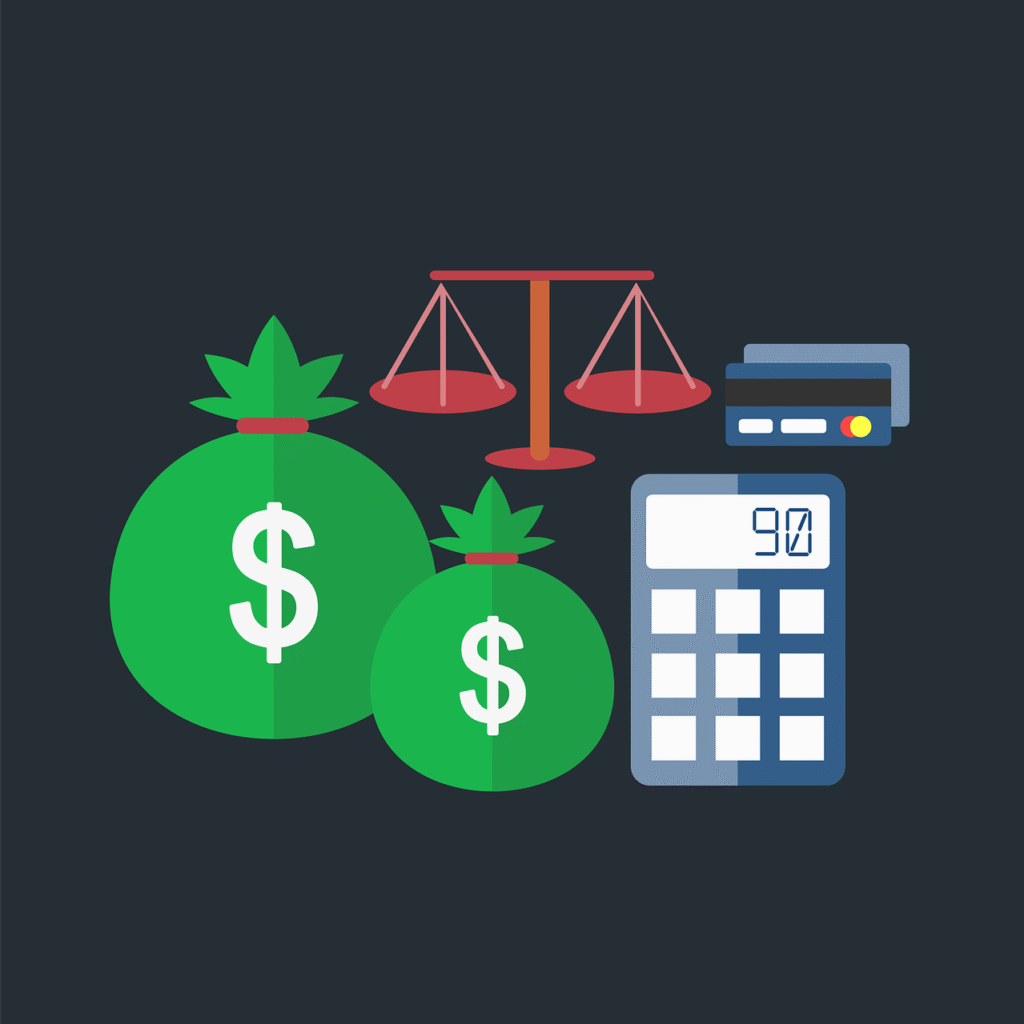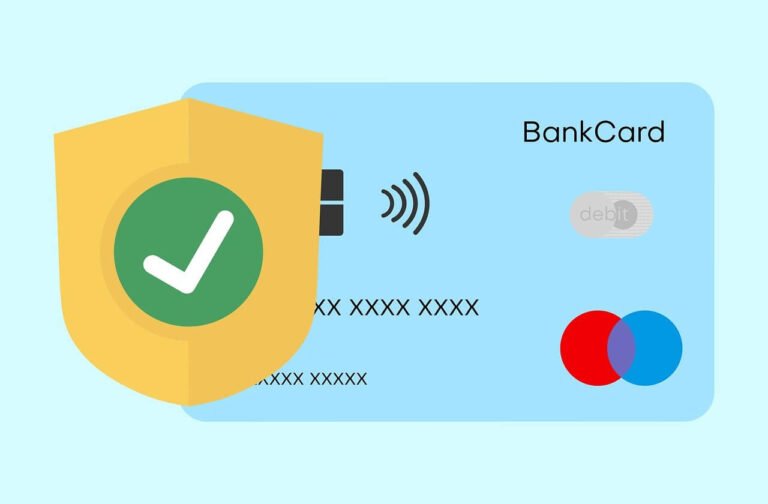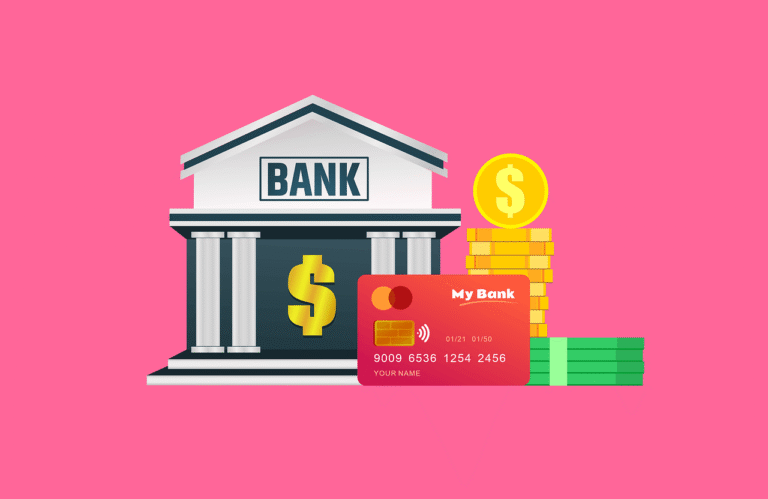Are you wondering how do banks Make Money From High Yield Savings Accounts? You’re earning 4% or 5% on your high yield savings account and feeling pretty good about it.
But then a thought crosses your mind: if the bank is paying me all this interest, how are they making any money? Are they losing money on my account? It’s a fair question, and the answer reveals how the whole banking system works.
Banks aren’t charities, obviously. They’re running businesses that need to generate profits for shareholders and cover expenses.
When they offer you a high yield savings account with attractive interest rates, they’re not doing it out of the goodness of their hearts. They have a clear strategy for turning a profit, and understanding it helps you see the bigger financial picture.

The Basic Banking Business Model
Banks operate on what’s called the interest rate spread. This concept is simple: they pay you one rate to keep your money with them, then turn around and lend that money to someone else at a higher rate. The difference between what they pay you and what they charge borrowers is their profit margin.
Think of banks as middlemen in the money market. You deposit $10,000 and earn 4.50% interest. The bank takes that $10,000 and loans it to someone buying a house at 7.00% interest. The bank pockets the 2.50% difference. Multiply that by millions of customers and billions of dollars, and you start to see how the profits add up.

Where Your Money Actually Goes
When you put money in a high yield savings account, it doesn’t just sit in a vault collecting dust. Banks immediately put your deposits to work by lending them out to other customers who need money.
The majority goes toward consumer loans, mortgages, auto loans, personal loans, and credit cards. Some get used for business loans to companies that need working capital or want to expand. A portion might go toward commercial real estate loans for office buildings or shopping centers. Banks carefully balance where they deploy deposits to maximize returns while managing risk.

How Do Banks Make Money From High Yield Savings Accounts: The Profit Spread Explained
Let’s break down the numbers with a real example. Say you deposit $50,000 in a high yield savings account earning 4.50% APY. The bank pays you $2,250 in interest per year for the privilege of holding your money.
That same bank might lend your $50,000 to someone taking out a personal loan at 10.50% interest. They collect $5,250 in interest from the borrower. After paying you your $2,250, they’re left with $3,000 in gross profit from your deposit. That’s a 6% spread, which is pretty comfortable for them.
Mortgages and Long-Term Loans
Mortgages represent one of the biggest ways banks profit from savings deposits. Current mortgage rates in September 2025 hover around 6.50% to 7.50% for most borrowers. When banks pay 4.50% on deposits and charge 7.00% on mortgages, that 2.50% spread generates steady income.
The beauty of mortgages for banks is that they’re long-term loans, typically 15 or 30 years. This provides predictable income over extended periods. Even though banks pay depositors high rates now, they’ve locked in borrowers at even higher rates for decades, securing future profits regardless of rate changes.
Credit Cards Are Cash Cows
Here’s where banks really make serious money. Credit card interest rates average between 18% and 25% right now. If a bank uses your high yield savings deposit to fund credit card lending, the profit margin is enormous.
Imagine the bank pays you 4.50% on your savings but charges a credit card holder 20.00%. That’s a 15.50% spread—more than triple what they make on mortgages. This is why banks push credit cards so aggressively. The profit potential from credit card interest and fees is significantly higher than almost any other lending product.
Auto Loans and Personal Loans
Auto loans currently range from about 6% to 12% depending on credit scores and loan terms. Personal loans sit somewhere between 8% and 15% for most borrowers. Both offer attractive spreads when the bank is paying 4.50% on deposits.
These shorter-term loans also benefit banks because the money cycles back faster. A five-year auto loan returns the principal much quicker than a 30-year mortgage, letting banks redeploy that capital into new, potentially more profitable loans sooner.
Business and Commercial Lending
Banks don’t just lend to individuals. Business loans for equipment, expansion, or working capital typically carry rates from 7% to 12%. Commercial real estate loans for office buildings, warehouses, or retail spaces usually range from 6% to 10%.
These loans often involve larger amounts—hundreds of thousands or millions of dollars—so even moderate spreads generate substantial profits. A $5 million commercial loan at an 8% rate with deposits funded at 4.50% produces $175,000 in annual gross profit just from that one loan.
How Online Banks Keep Costs Lower
You might wonder how online banks can afford to pay higher interest rates than traditional banks. The answer lies in their cost structure. Online banks don’t maintain expensive branch networks with rent, utilities, and staff at hundreds or thousands of locations.
By eliminating physical branches, online banks save enormous amounts on overhead expenses, allowing them to pass those savings to customers through higher savings rates while still maintaining healthy profit margins on the lending side. Their loans still charge market rates, but their deposit costs can be slightly higher because their operational expenses are much lower.
The Volume Game
Banks make money through volume as much as through spreads. A bank might only profit $200 per year from your individual $10,000 deposit, but if they have 100,000 customers with similar balances, that’s $20 million in annual profit just from the spread.
Large banks typically maintain net interest margins between 2.5% and 3.5%, while community banks often achieve 3.5% to 4.5%. These margins might seem small, but they apply to massive pools of deposits. A bank with $10 billion in deposits earning a 3% net margin makes $300 million in profit annually.
Other Revenue Streams
The interest rate spread isn’t the only way banks profit from savings accounts. They also generate income through various fees, though high yield accounts typically minimize these compared to traditional banks.
Some banks charge overdraft fees, wire transfer fees, or fees for expedited services. Investment services, wealth management, and financial advisory fees add more revenue. Cross-selling other products to savings account holders—checking accounts, credit cards, investment accounts—creates additional profit opportunities beyond just the deposit itself.
Risk Management and Reserves
Banks can’t lend out every dollar deposited. Federal regulations require them to maintain reserves—a percentage of deposits that must stay liquid and available. This protects depositors and ensures banks can handle withdrawal requests.
Currently, banks must keep a portion of deposits as reserves, though the exact percentage varies based on the bank’s size and other factors. This money doesn’t generate lending income, which is why banks need sufficient spreads on the money they do lend. The profits from loans must cover both the interest paid to depositors and the cost of holding required reserves.
Interest Rate Environment Matters
Banks’ profitability from high yield savings accounts depends heavily on the overall interest rate environment set by the Federal Reserve. When the Fed keeps rates high, banks can charge more for loans while managing what they pay on deposits.
The Federal Reserve reduced the federal funds rate to 4.00%-4.25% at its September 2025 meeting, which affects both deposit rates and lending rates. As rates decline, banks might lower savings account rates faster than they reduce lending rates, temporarily expanding their profit margins until competition forces loan rates down too.
Why Banks Want Your Deposits
You might think banks would prefer not to pay interest on deposits at all. But deposits are actually cheaper funding for banks than the alternatives. Banks could borrow money from other financial institutions or the Federal Reserve, but those sources typically cost more.
Your savings deposit at 4.50% is actually a bargain for the bank compared to borrowing from other banks at higher rates. Plus, customer deposits are generally more stable than institutional borrowing. People don’t typically yank all their savings out overnight, giving banks predictable, reliable capital to work with.
The Competition Factor
Banks offer competitive high yield savings rates because they need deposits to fund their lending operations. If Bank A offers 4.00% while Bank B offers 4.75%, customers will move their money to Bank B. This competition forces banks to share more of their profits with depositors.
Read Also:
- What Is a High Yield Savings Account and How Does It Work?
- How Interest Is Calculated on High Yield Savings Accounts
- High-yield savings account calculator
Online banks especially compete aggressively on rates because they can’t compete on branch convenience. Their high rates serve as their primary customer acquisition tool. They’re essentially spending marketing dollars through higher interest payments, betting that attracting more deposits will increase their overall lending volume and profits.
When Banks Adjust Their Rates
Banks don’t lock in high yield savings rates forever. They adjust them based on market conditions, competition, and their own funding needs. When a bank has plenty of deposits and doesn’t need more money to fund loans, they might lower rates to improve their profit margins.
Conversely, if a bank is growing rapidly and needs more deposits to fund an increasing loan portfolio, they might raise rates to attract new money. This dynamic pricing helps banks balance profitability with growth and ensures they always have enough capital to meet lending demand.
The Long-Term Profit Picture
Even though high yield savings accounts pay significant interest to depositors, banks remain profitable because they’re experts at managing the spread between deposit costs and lending income. They employ teams of analysts who constantly monitor rates, adjust pricing, and optimize their loan portfolios.
US banks with less than $10 billion in assets improved their net interest margin from 3.34% at year-end 2023 to 3.52% at year-end 2024, showing that banks successfully navigated the high-rate environment while maintaining profitability. The key is careful management of both sides of the balance sheet, paying competitive deposit rates while charging sustainable lending rates.
What This Means for You
Understanding how banks profit from high yield savings accounts shouldn’t make you feel bad about earning good interest. This is how the system works, and it benefits everyone involved. You get a safe place to store money that grows faster than inflation. Borrowers get access to capital they need for homes, cars, education, and businesses. Banks profit by connecting these two groups.
The relationship is genuinely symbiotic. Banks need your deposits to fund profitable lending operations. You need a secure place to save that offers decent returns.
The existence of profit margins doesn’t diminish the value you receive—it’s what makes the whole system sustainable. Banks that can’t profit eventually fail, which helps no one.
Conclusion
Now that you know banks are profiting from your deposits by lending at higher rates, you can appreciate why shopping for the best rates matters. Every 0.50% difference in your savings rate is profit the bank keeps instead of paying you.
By choosing high yield accounts with top rates, you’re essentially negotiating a better share of the bank’s profits for yourself. The bank still makes money from the spread between what they pay you and what they charge borrowers, but you’re maximizing your portion of the deal. That’s smart money management based on understanding how the system actually works.



